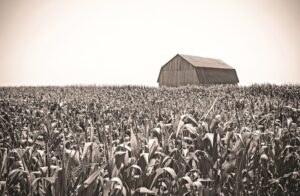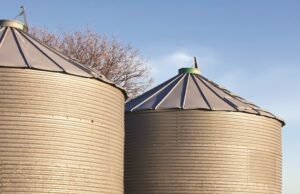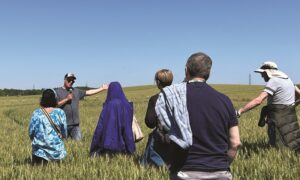Field Observations
FALL 2024
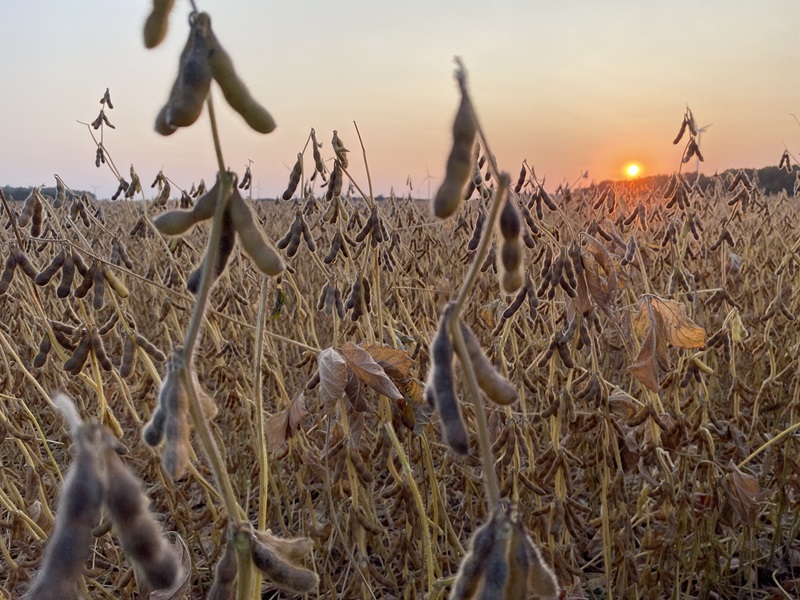
September 26, 2024
The soybean harvest saw a good few days of productivity last week and into the weekend, but rains have put harvest and winter wheat planting on hold for much of the province. Pay particular attention to optimum winter wheat planting dates and increase seeding rates accordingly.
Corn
Corn is anywhere from a black layer to 1/4 milk line in most areas. Warm days in the past couple of weeks have really helped advance corn. With exceptionally warm, dry weather, grain moisture could decrease by one point per day. As October approaches, with cooler weather and some showers, it will be common to need approximately three days to remove one point of moisture.
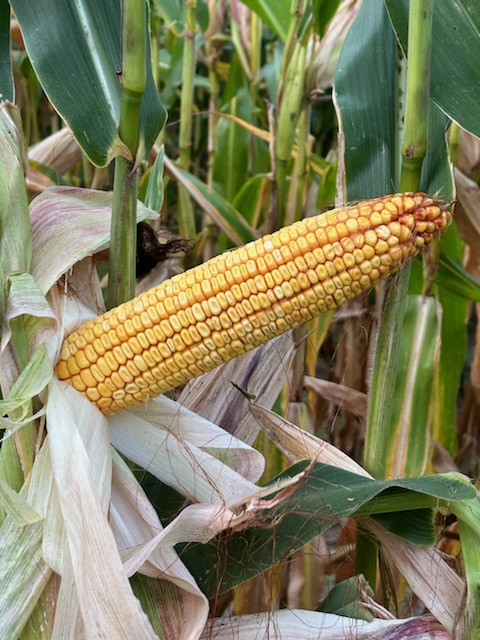
Are there lodged corn plants in your fields? Was corn grown in the same field last year? Are the roots small and look pruned? Now is the time to diagnose why things might not look as good as they should. Corn rootworm, poor root development from compaction, and poor hybrid selection can cause standability concerns. Be sure to take the time to determine which factor is affecting corn stands and make better choices for next year! Find out more in the managing corn rootworm resistance factsheet.
Gibberella ear mould has appeared in some locations. Most of the crop has looked to be free of ear mould, until now. The crop was infected during pollination with ideal moderate temperatures and humidity, aiding in infection of the silk channel. Conditions after infection will lead to the actual development of the visual symptoms of ear mould that are just now being observed.
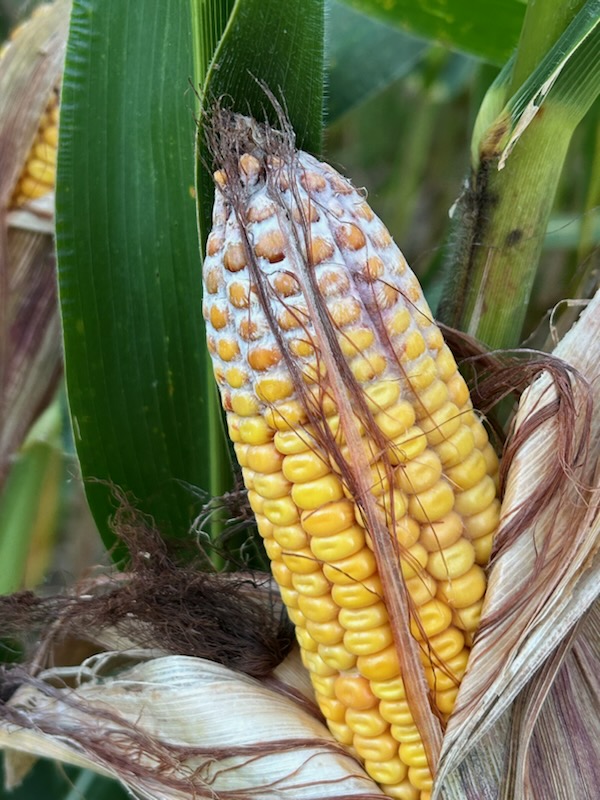
The past few weeks of morning fog and heavy dews have led to higher humidity in the canopy, which fuels this disease. Areas where fields do not dry out as quickly, like around tree lines and buildings, should be the first place to scout. Fields and hybrids with open husks will have an environment of dryer conditions, which will limit disease growth. Look for the tight-husked plants to find if mould is present. Identify fields of concern and be sure to manage them this fall by prioritizing harvest and quickly drying down to limit the amount of DON that gets produced. Wet, cool conditions will favour DON production. Read more information on DON in corn.
Soybeans
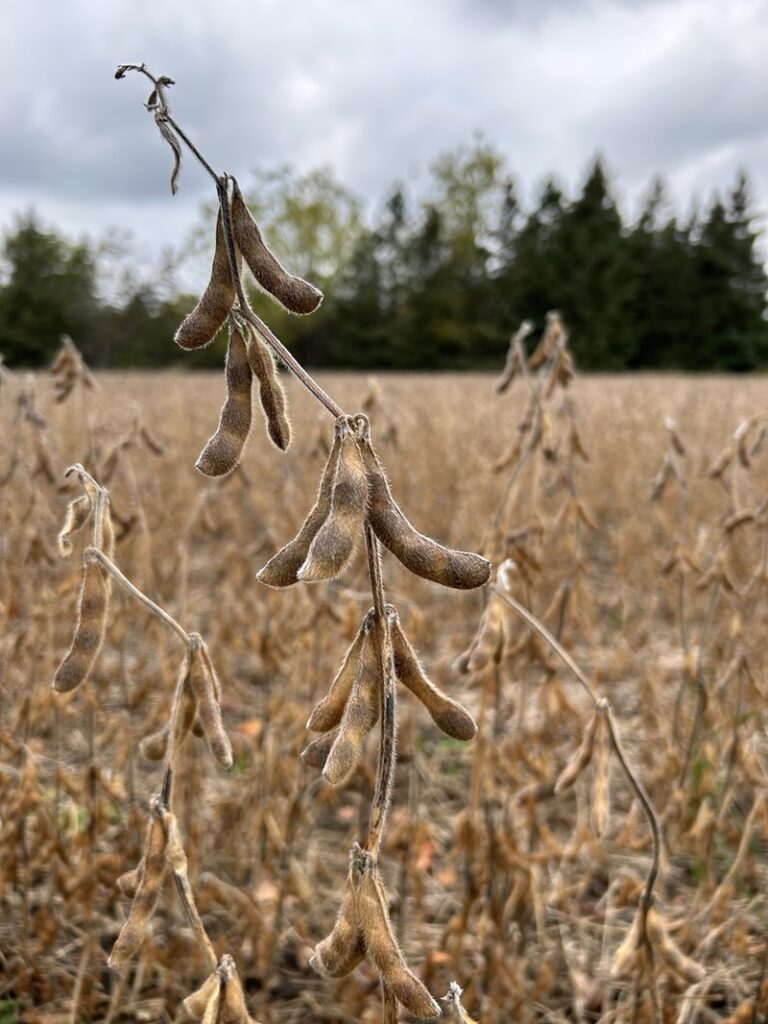
Soybean harvest is continuing across the province as weather and plant maturity allow, with five to 10 per cent harvested. As there was an extended hot, dry period approaching soybean harvest, there were some reports of soybeans being harvested below 13 per cent. Harvesting below optimum harvest moisture can impact revenue through reduced delivery weight and shatter loss and splits. With rain arriving earlier this week, it should help the moisture of the soybean seed return to a moisture that is more desirable for harvest.
Soybean harvest started slightly earlier than some years. There are some great advantages to harvesting early: timely wheat planting, reduced soil compaction from typically wet fall soils later in the year, earlier fall tillage, and the ability to switch to corn earlier are some of the benefits.
The Soybean Cyst Nematode Coalition has named National Nematode Day October 1, 2024, to increase awareness around this yield-robbing pest. To learn more about SCN, visit the SCN Coalition.
Cereals
Winter wheat planting is occurring, with some areas planting earlier than normal. A nice rain across most of the province will ensure moisture for wheat to germinate, especially in areas lacking moisture.
For several regions, the optimum date for planting has passed, while in other areas, it is approaching. As optimum dates approach, the seeding rate should increase. 1.4 to 1.6 million seeds per acre is recommended for early planting. Two hundred thousand seeds should be added to the equation for each week’s delay after optimum, with 2.2 million seeds being the per acre maximum rate. The later winter wheat is planted into the season, the lower the number of tillers will develop, and the higher the seeding rate will help compensate.
Spring cereal harvest, oats, in particular, is still occurring in the northern portion of the province.











